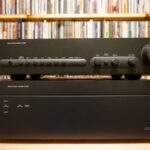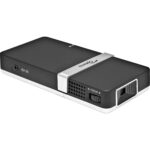On the IFA show in Berlin, Texas instruments has introduced an enhancement to its DLP projection technology that enables TV sets to display 3D images. Mitsubishi and Samsung are among the first OEMs to implement the technology in their products, TI said.
The technology shown adopts Texas Instruments’ DLP Cinema technology to living-room dimensions. Basically, it incorporates a rear projection TV modified to process HD material such as HDTV, HD-DVD or Blu-ray as source. However, the material has to be produced accordingly, and viewers have to use specific shutter goggles.

The DLP 3D HDTV technology supplies a 60Hz frame rate signal to each eye; internally the device works with a 120Hz frame rate. The 3-D stereoscopic video content is fed to the TV set equipped with the 3-D display via HDMI or DVI port. Left and right stereo images are filtered independently and then sampled in an offset grid pattern. In the display, the resulting views are combined again and appear as spacial image to the viewer.

source: DLP Texas Instruments







